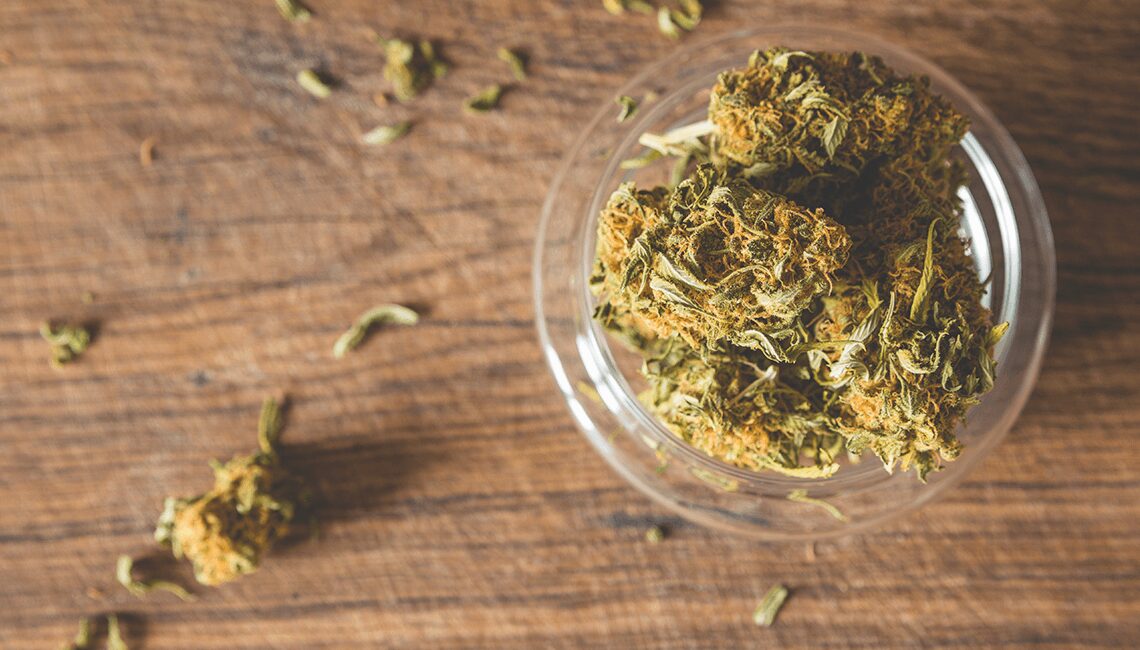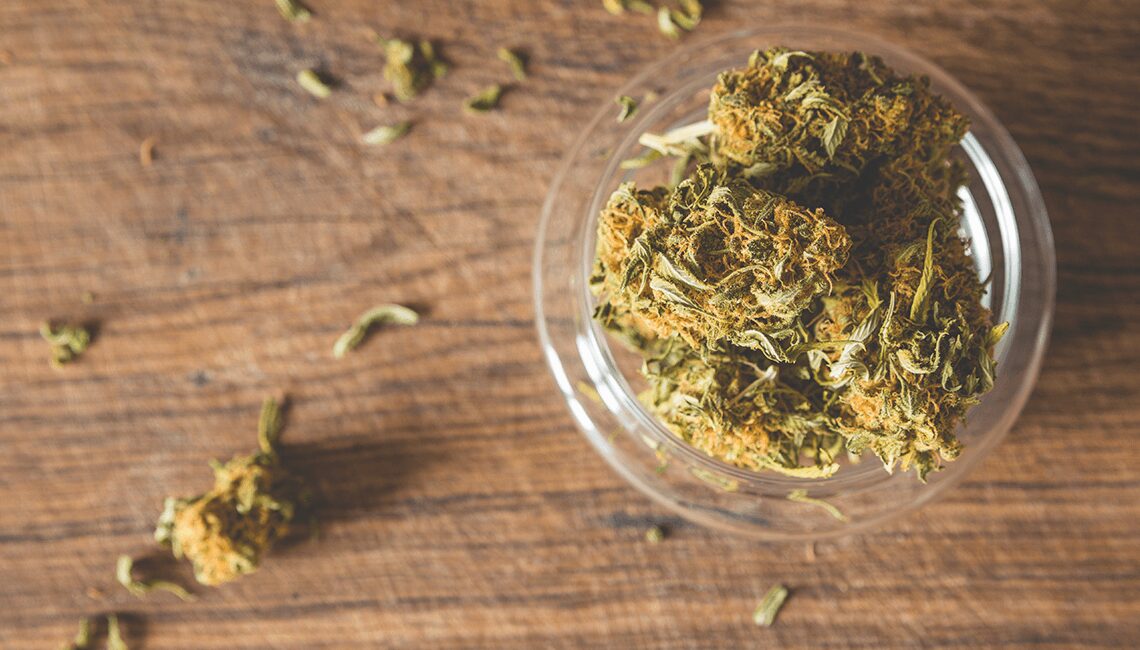It may feel cool to give your blessing to marijuana now that many states have legalized the drug. But serious potential consequences, both sociological and psychological, await and the world is watching.
As a teenager in the 1970s, I often felt like the only person in the world who wasn’t smoking pot. At age 15, I took a few puffs off a marijuana cigarette. My throat felt raw for two days afterwards and I didn’t feel any of the effects that I heard friends brag about. I was a “goody two-shoes” after all, and didn’t see the point of risking trouble for something that my instincts suggested would be bad for me and was illegal.
I also had a front-row seat to witness the effects that habitual use of the drug had on older people. My dad owned a successful music publishing company in Nashville, Tennessee. Several of the songwriters associated with his company on Music Row spent lots of time smoking pot. As I worked there during high school and then on my college breaks, I watched the talents and ambition of wildly creative people increasingly diminish. By college, I’d made a hard and fast rule: I wouldn’t date anyone who smoked pot. I didn’t like the stunted vocabulary, the ambivalence, and frequent hacking cough.
Fast forward to today. I am dazed and confused. A recent survey showed that 52 percent of the public thinks it should be legalized. Furthermore, 18 states have legalized medical marijuana and several more are considering doing the same.
This significant shift in attitudes has made me question my perception of the drug. What has changed over the decades? Why is the recreational use of marijuana becoming so much more acceptable?
Over the years, I have listened to friends wax nostalgic about smoking weed in their youth. With seemingly benign images of cannabis bakeries peddling marijuana-chocolate cupcakes in Colorado, would they be tempted again? What about teens and young adults? How would this altered attitude toward the legalization of a drug that’s been outlawed for decades affect young people? Curious, I turned to the experts.
“Legalization of marijuana sounds cool and rebellious, but it is a terrible idea,” says Carole Lieberman, MD, a psychiatrist and author who is on the Clinical Faculty of UCLA’s Neuropsychiatric Institute. “I have treated countless patients whose psychosis was triggered by their chronic use of marijuana. These are people who may have had a genetic predisposition to mental illness—notably schizophrenia or manic depressive illness [bipolar disorder], but whose symptoms would not have been manifest were it not for marijuana affecting the chemistry of their brain and making it more vulnerable. Even without a predisposition to mental illness, people who use marijuana recreationally and regularly become lethargic and apathetic, giving up dreams and becoming couch potatoes. It is still the gateway drug to more harmful drug abuse.”
Dr. Lieberman, who practices in Los Angeles, frequently comes across people who are going to doctors and getting prescriptions for medical marijuana when they aren’t warranted. “I’ve seen that many times,” she says. “When a patient has a first psychotic break we often learn that they’ve been using pot.”
Romanticizing Marijuana
Dr. Lieberman is also concerned about women over 40 romanticizing the drug. “People who used it in the past are going to remember the fun days and may be tempted to relive those days,” she says. “They will think nothing of it, because they’ll think, It didn’t do anything bad to me then. There’s a trend among some women with children to have playdates where they get drunk rather than deal with the stress in their lives in a healthy way. While the legalization of marijuana is new, I’m concerned that it could become the new dangerous trend, with more people feeling depressed and anxious these days. When there’s another drug available to help you escape from your stress, it’s going to be tantalizing.
It is still too early to understand the impact of legalization on increased use among teenagers and adults, says Dr. Damon Raskin, a detox and addiction expert at Cliffside Malibu Addiction Treatment Center. “Legalization sends a dangerous message that pot is safe and has no long-term consequences, whereas the opposite is true. Pot damages the heart and lungs; increases the incidence of anxiety, depression, and schizophrenia; and can trigger acute psychotic episodes. Some adults appear able to use marijuana with relatively little harm, but the same cannot be said of adolescents, who are about twice as likely as adults to become addicted to it. The studies show that one out
of 11 adults who try marijuana will become dependent or addicted, while one out of six adolescents will become daily, or near-daily, users.”
More Potent Pot
Clouding the issue is the fact that much of the marijuana available today is far more potent than it was in the
past, Dr. Raskin warns. The levels of THC—delta-9-tetrahydrocannabinol, the psychoactive agent that causes mind-altering effects—are up to 10 times what they were in the 1970s. So the potential for more intense deleterious
effects on the user has gone up exponentially.
Marijuana these days can cause changes in the brain that impair learning—especially in teenagers and young adults, since their brains do not finish developing until around age 26. “When we look at MRIs of habitual users, we see changes in the brain similar to what we see with schizophrenia,” he says. “Chronic marijuana use can lead to changes in both personality, judgment, and reasoning skills. We see lower IQs.”
THC mimics the action of anandamide, which is a naturally occurring cannabinoid in the brain, and binds to sites called cannabinoid receptors (CBR) on brain cells. Many other cannabinoids are found in marijuana, but THC is the most powerful psychoactive ingredient in marijuana. It’s the one that causes altered perception of time and space and may produce euphoria in some people. On the flipside, THC can, in many cases, induce anxiety, disorientation, and memory lapses.
When the brain’s cannabinoid receptors become overstimulated and their function is altered, it can lead to addiction and withdrawal symptoms such as agitation, depression, and sleeplessness when the marijuana usage stops. “Medical professionals are seeing more emergency room visits, and with adolescents, there is greater risk of psychosis and delirium,” says Dr. Raskin.
While alcohol is known to leave your system within an hour or two after you stop drinking, marijuana can linger in your system for months. This is because your brain is comprised primarily of fats, and the active ingredients in marijuana bind to your fat cells to make the effects last longer. “With marijuana, you can take one hit and be impaired for several hours,” says Dr. Raskin. “It’s misinformation to say that marijuana is not as dangerous as alcohol. Why would we want to add one more substance that can be so damaging?”
Buyer Beware
“People need to understand that we are dealing with a different version of the drug than we were 40 years ago,” warns Dr. Raskin. “The risks are much greater.”
Dr. Raskin also expresses deep concerns about contaminants such as pesticides and what marijuana—which can be ingested through smoking, food, drinks, and pills—might potentially be laced with. Another worrisome trend that has sprung up around the debate is the popularity of synthetic marijuana, a psychoactive designer drug created by spraying natural herbs with synthetic chemicals. When consumed, synthetic marijuana produces psychoactive effects similar to those of cannabis. It is legally marketed as herbal incense, but people—especially teens—are using it to get high. Synthetic marijuana markets itself as a harmless alternative, and sellers are known to tell buyers that they can use it without worrying about passing drug tests. But the results can be deadly, because you actually have no idea what you’re ingesting. Any drug purchased for recreational use—anything that is not made available to you legally by a pharmacist—carries grave risks. “Even in places where marijuana is legal, it’s difficult to regulate, so you don’t actually know what you are getting,” Dr. Raskin cautions.
Judy Kirkwood, who is an award-winning blogger on adolescent issues and the impact of addiction, an advocate for adolescent addiction treatment, and a member of the National Parent Network of the Partnership at Drugfree.org, is deeply concerned by the increasingly permissive attitude toward marijuana. “As it is legalized, corporations will target teens much as the tobacco companies did,” she says. “We don’t compare it with alcohol as much as we do with tobacco. We see that it is going to be the same kind of problem as smoking. Although corporations knew how addictive tobacco was, their strategy was to target teens and make it cool. Corporate marijuana companies will do the same.” Kirkwood answers questions and provides support in the “Time to Get Help” section of Drugfree.org and coaches parents of young drug users.
She recently coached a concerned parent whose teenager was partaking in pot. Her ex-husband runs a marijuana dispensary, so she felt exceedingly helpless to stop her son’s use of the drug. “These situations are going to come up more and more with a patchwork of states legalizing the drug,” Kirkwood says. “It’s so confusing for both parents and the kids.”
One of the most vocal opponents to the legalization of marijuana is the former DEA administrator Peter Bensinger, who served in three presidential administrations. He bluntly calls the push toward legalization of marijuana a disaster. “It will damage our young people,” Bensinger insists. He declares that it is a myth that marijuana is harmless. He ticks off a list of negatives, including memory loss and an impact on the immune system if used regularly. It also affects your response time and depth perception. Recent statistics show a spike in traffic fatalities of drivers high on pot.
Dr. Nancy Simpkins runs a large suburban medical practice in Livingston, New Jersey, in a state where medical marijuana has recently been legalized. Dr. Simpkins is particularly concerned about his issue. She has seen a dramatic uptick in the drug’s recreational use, especially among young people. “Teenagers are reckless to begin with, so I see it as a big problem in young people,“ Dr. Simpkins says. “It is often cut with other substances, so you never know what you are getting.”
After asking a lot of questions, my opinion of marijuana has changed: I now see it as more dangerous than I did before. However, as with many substances, there may be appropriate medical uses of marijuana. This will be explored in part two, in the next issue.
Your Brain on Pot
Common Effects Of Marijuana On The Brain:
- Euphoria
- Heightened Sensory Perception
- Altered Perception of Time
- Anxiety, Fear, Panic
- Memory Loss
- Hallucination
- Delusion
- Cell Alteration Similar to Those Associated with Schizophrenia or Bipolar Disorder
Your Body on Pot
Physical Effects Of Marijuana on the Body:
- Increased Appetite
- Lack of Balance
- Diminished Coordination
- Increased Heart Rate
- Respiratory Issues Experienced by Tobacco Smokers
- Reddening of Eyes
- Dry Mouth
Chronic Use Effects
The Following Outcomes Are Seen Among Chronic Marijuana Abusers:
- Intoxication
- Short-Term Memory Impairment
- Attention, Judgment, and Other Cognitive Impairment
- Coordination and Balance Impairment
- Increased Heart Rate
- Psychotic Episodes
Persistent (Not Permanent)
- Memory and Learning Skills Impairment
- Sleep Issues
- Addiction
- Chronic Cough, Bronchitis
- Schizophrenia
- Anxiety, Depression, Amotivational Syndrome












